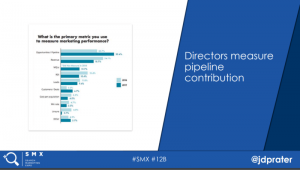Invoices are the lifeline for most small businesses for one particular reason: it is the main source of cash flow, which is often more important than profits. While profits are important in the long-term of a business, cash flow is crucial in the short-term to ensure that businesses are able to meet their financial obligations.
While many businesses end up using the standard sales invoice, there are actually quite a few more invoice types. These are used in various businesses for their effectiveness, and they may just help yours.
So let’s look at 7 of the most important invoice types that can help boost your small business.
Proforma Invoice
The proforma invoice may be the most popular of all the non-standard invoices because it can be used in two ways.
The first way is for shipping goods internationally. It is used by customs agents to help them determine the value of the goods being shipped.
The second way is as a type of quotation or estimate. This is normally used by businesses when they have new clients. They want to first show what the price of the goods or services will be, so they send a proforma invoice.
It is important to note that the proforma is not a complete document, so there should be no VAT or other taxes included.
Commercial Invoice
The commercial invoice can seem very similar to the proforma invoice, especially since it is used for shipping goods internationally. It is used by customs to determine the necessary duties and taxes that needs to be applied for the goods.
The commercial invoice, however, is the preferred document as it has more information than the proforma and is more standardized.
The commercial invoice will not only include the supplier and buyer information, but also the itemized goods and the country where the goods were manufactures. It also needs to include the Harmonized System codes, a standard code system that is used to classify internationally-traded products.
Credit Note
The credit note, in many cases, can be seen as the very opposite of a standard invoice. Instead of the supplier sending a request for payment to a buyer, as is the definition of an invoice, the supplier is actually sending credit to the buyer.
This is due to the fact that there has been an error in the original invoice or the delivery of the goods or services. The goods may have been damaged in shipping, the goods or services could have been below standard, or the original invoice overcharged.
The credit note will be equal to the original invoice amount or partial, depending on the circumstances. The supplier will either send a cash refund or provide the customer with credit on the next purchase.
Debit memo
The debit memo is the true opposite of a credit note. Here, the fault lies with the buyer who has made an error in paying the original invoice, or the buyer may not have paid it at all.
The debit note is therefore sent by the supplier to the buyer as a follow-up document to state the outstanding amount. It could be the amount unpaid for the original invoice, or it could be the original invoice amount plus any late fees.
Timesheet invoice
A timesheet invoice is best thought of as a document that combines the function of a timesheet and a standard invoice. The timesheet invoice is applicable to those entrepreneurs who work for their clients on an hourly basis.
This type of invoice will detail the specific hours and dates worked per day, as well as the total amount and the hourly rate.
This helps to cut down on the risk of lost documents (by sending one document instead of two) and helps speed up the time for processing.
Self-billing invoice
A self-billing invoice can best be seen as more of an invoicing process than a document in and of itself. In self-biling, as the name suggests, the customer will actually send the invoice to himself.
Here the invoice is not generated by the supplier—as soon as the customer receives the goods or the services have been delivered, the customer will create the invoice and send it immediately to his or her accounts payable department (or pay it himself). He will also send a copy to the supplier for his accounts receivables.
Although it is gaining ground for cutting down on time and expenses, self-billing is still regulated differently around the world. In the UK, for example, in order for two parties to utilize self-billing, both sides must be VAT-registered.
Progress invoice
This type of invoicing is crucial for those suppliers who are involved in long-term projects, such as construction businesses.
In progress invoicing, the supplier doesn’t have to wait for the project to be completed to get paid, which can take many months and even years. Neither does the buyer have to pay out all the money upfront for work not yet done.
Instead, they will agree upon certain measurable stages throughout the life of the project, at which time the supplier will create progress invoices.
The progress invoice will include:
- the amount of the original contract, plus any agreed-upon changes
- the percentage of the project so far completed
- the amount that is currently due
- the total amount that is still remaining for the entire project
While all of these invoice types are suitable for many businesses and can help speed up the invoice payment processes, they may not all be suitable for yours. It is best to determine your industry and see which invoice would suit your business.
Business & Finance Articles on Business 2 Community(74)







